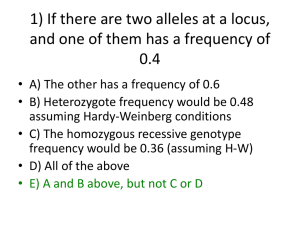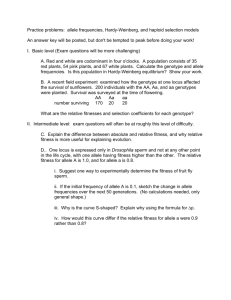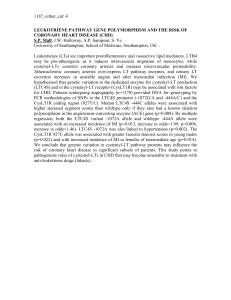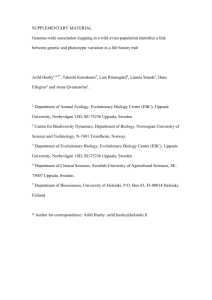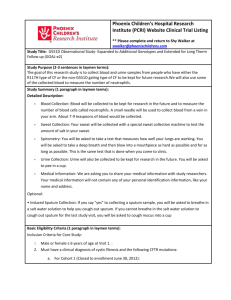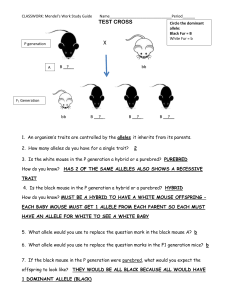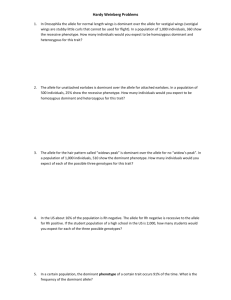Ungraded Practice Quiz (week 9-pop gen)
advertisement
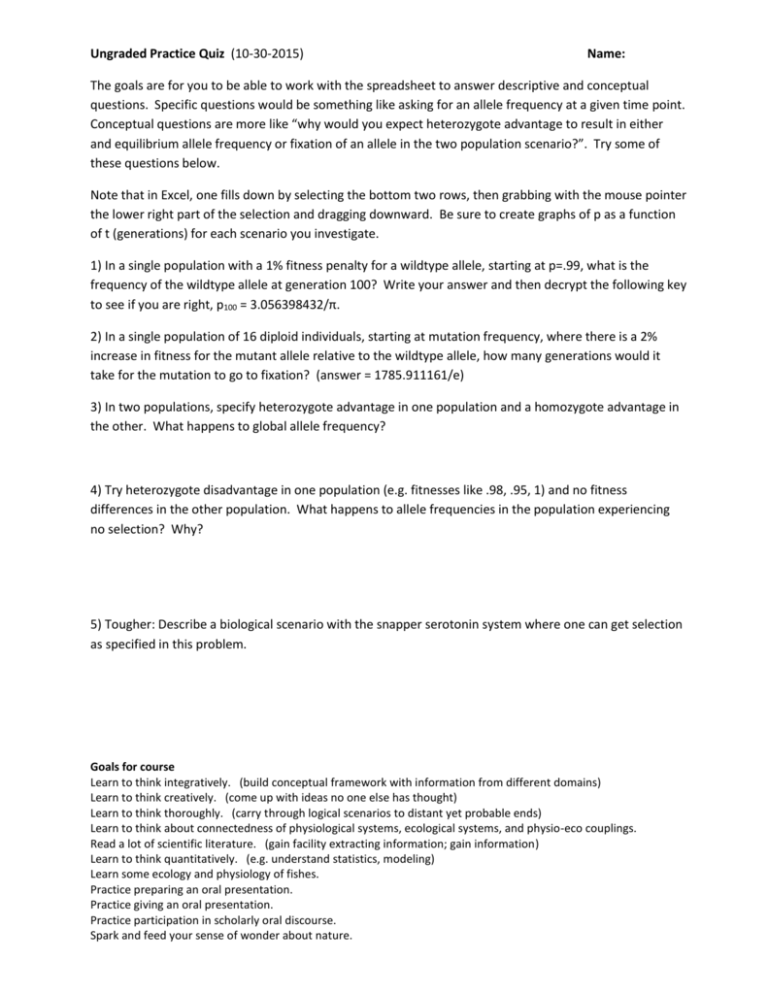
Ungraded Practice Quiz (10-30-2015) Name: The goals are for you to be able to work with the spreadsheet to answer descriptive and conceptual questions. Specific questions would be something like asking for an allele frequency at a given time point. Conceptual questions are more like “why would you expect heterozygote advantage to result in either and equilibrium allele frequency or fixation of an allele in the two population scenario?”. Try some of these questions below. Note that in Excel, one fills down by selecting the bottom two rows, then grabbing with the mouse pointer the lower right part of the selection and dragging downward. Be sure to create graphs of p as a function of t (generations) for each scenario you investigate. 1) In a single population with a 1% fitness penalty for a wildtype allele, starting at p=.99, what is the frequency of the wildtype allele at generation 100? Write your answer and then decrypt the following key to see if you are right, p100 = 3.056398432/π. 2) In a single population of 16 diploid individuals, starting at mutation frequency, where there is a 2% increase in fitness for the mutant allele relative to the wildtype allele, how many generations would it take for the mutation to go to fixation? (answer = 1785.911161/e) 3) In two populations, specify heterozygote advantage in one population and a homozygote advantage in the other. What happens to global allele frequency? 4) Try heterozygote disadvantage in one population (e.g. fitnesses like .98, .95, 1) and no fitness differences in the other population. What happens to allele frequencies in the population experiencing no selection? Why? 5) Tougher: Describe a biological scenario with the snapper serotonin system where one can get selection as specified in this problem. Goals for course Learn to think integratively. (build conceptual framework with information from different domains) Learn to think creatively. (come up with ideas no one else has thought) Learn to think thoroughly. (carry through logical scenarios to distant yet probable ends) Learn to think about connectedness of physiological systems, ecological systems, and physio-eco couplings. Read a lot of scientific literature. (gain facility extracting information; gain information) Learn to think quantitatively. (e.g. understand statistics, modeling) Learn some ecology and physiology of fishes. Practice preparing an oral presentation. Practice giving an oral presentation. Practice participation in scholarly oral discourse. Spark and feed your sense of wonder about nature.

